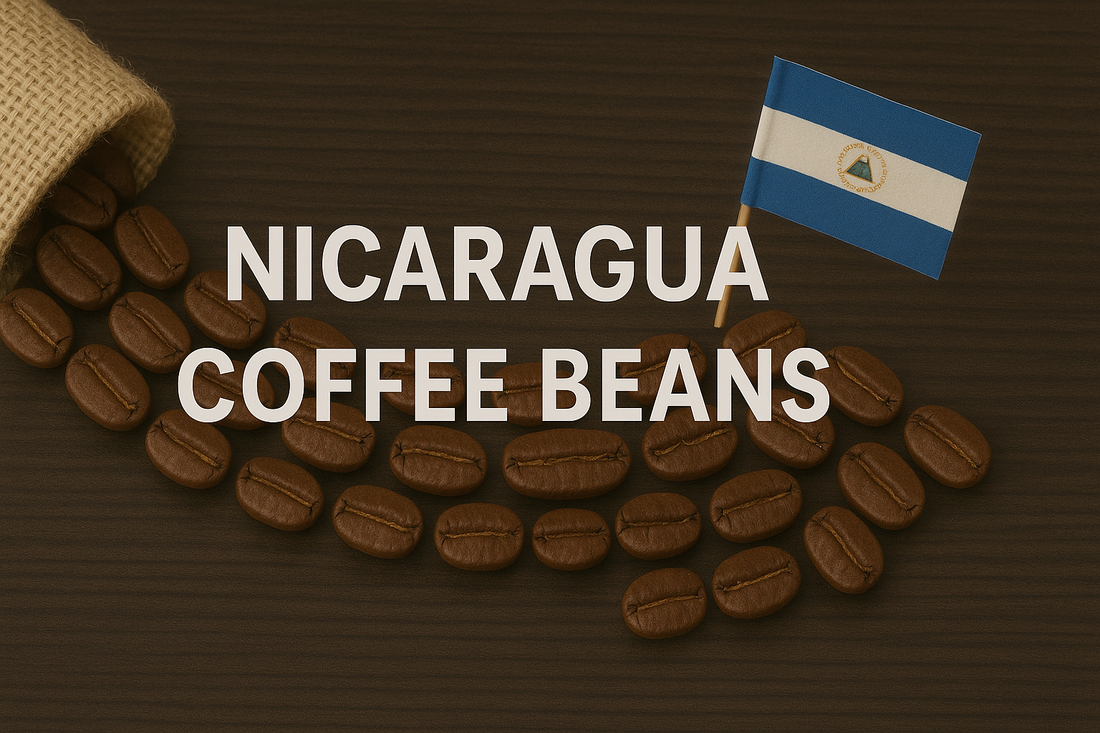
Nicaragua Coffee Beans
正啟 GLOBALEYESShare this news
Nicaragua's coffee industry has experienced a turbulent history due to political instability, natural disasters, and wars. Despite these challenging circumstances, small-scale coffee farmers have remained resilient. Since coffee exports began in 1848, annual coffee exports now exceed $500 million, supporting the livelihoods of over 40,000 Nicaraguan families.

The first coffee trees arrived in Nicaragua in 1796, but it was not until 1841 that small-scale exports to Europe began. Following the gold rush in 1849, the Nicaraguan government required indigenous peoples to work in coffee plantations, dedicating the central highlands to coffee cultivation. By the 1870s, coffee had become one of Nicaragua's primary agricultural exports.

With the establishment of the Small Coffee Farmer Cooperatives Association (CAFENICA) in the late 20th century, the coffee industry began receiving increased government attention and supportive policies, bringing hope and prosperity to Nicaragua's coffee sector. Today, Nicaraguan coffee represents approximately 1.5% of global coffee trade, with 95% of the production being shade-grown organic coffee. The industry employs nearly half a million workers, 95% of whom are small farmers, comprising about 15% of Nicaragua’s total labor force.

Nicaragua has fertile volcanic soils and high-altitude environments ideal for coffee cultivation. Harvest season usually occurs between October and February, meaning fresh Nicaraguan coffees are typically available from January through June. Washed processing dominates the country's coffee production, but due to the specialty coffee trend, other methods like natural (dry) processing, honey processing, and even unique experimental processing methods have emerged.

Coffee Growing Regions and Their Characteristics
Jinotega Region
- Altitude: 1,100 – 1,700 meters
- Main Varieties: Caturra, Bourbon
- Jinotega, from the indigenous name "Xinotencatl," meaning "City of the Elders," features mineral-rich volcanic soil and pleasant climatic conditions ideal for coffee cultivation, making it Nicaragua's premier coffee-growing region.

Matagalpa Region
- Altitude: 1,000 – 1,400 meters
- Main Varieties: Caturra, Bourbon
- Named after its capital, Matagalpa region is renowned for fertile volcanic soil and tropical forest ecosystems, producing high-quality coffee beans. Matagalpa is known as Nicaragua’s coffee capital and houses the National Coffee Museum.

Segovia Region
- Altitude: 1,000 – 1,400 meters
- Main Varieties: Caturra, Bourbon
- Coffees from the Segovia region feature remarkable fruity notes alongside flavors of almond, nougat, and rich chocolate. Renowned for balanced and consistent quality, Segovia’s coffee is highly suitable for everyday drinking.

Boaco Region
- Altitude: 450 – 950 meters
- Annual Rainfall: 1,200 – 2,000 mm
- Average Temperature: 18 – 30°C
- Located in central Nicaragua, Boaco Province is surrounded by high mountains providing cool climate conditions and abundant rainfall, creating ideal natural conditions for coffee cultivation. Most coffees grown here are commercial grade, shade-grown, and processed using natural methods.

Pacific Region
- Altitude: 500 – 900 meters
- Annual Rainfall: 700 – 1,000 mm
- Average Temperature: 17 – 32°C
- Situated along Nicaragua’s Pacific volcanic coastal regions, the Pacific region produces mainly commercial-grade coffees at relatively lower altitudes. These coffees are shade-grown and predominantly processed using the natural (dry) method.

Coffee Varieties of Nicaragua
The majority of Nicaragua’s coffee varieties include Bourbon and Caturra, along with smaller amounts of Pacamara, Maragogype, Maracaturra, Yellow and Red Catuai, and Catimor. Among these, Nicaragua is particularly renowned for its Maragogype variety, colloquially known as "Elephant Beans," a naturally occurring Typica mutation featuring notably large beans. This variety thrives best at altitudes between 600 and 900 meters.

Maragogype was initially discovered in Brazil but was commercially cultivated on a large scale in Nicaragua. Maragogype beans exhibit a delicate body, refined balance, bright acidity, and clean mouthfeel, making them exceptionally suitable for medium roast levels.
Another famously large bean cultivated in Nicaragua is Pacamara, a crossbreed between Pacas and Maragogype varieties. Although Pacamara trees are relatively easier to cultivate, their large beans require careful handling during processing to avoid damage.

Nicaraguan Coffee Bean Classification
Nicaraguan coffee beans are graded according to growing altitude, as follows:
- Strictly High Grown (SHG): 1,500 – 2,000 meters
- High Grown (HG): 1,300 – 1,500 meters
- Medium Grown (MG): 1,000 – 1,300 meters
- Low Grown (LG): 500 – 1,000 meters

Flavor Profile of Nicaraguan Coffee
Nicaraguan coffee flavor profiles are similar to neighboring Central American countries, yet notably more balanced. Most Nicaraguan coffees possess a full body, moderate acidity, refreshing fruity undertones, and pleasing mouthfeel. Aromatic characteristics often include elements of caramel, citrus, and chocolate, creating a harmonious, well-rounded coffee experience.

